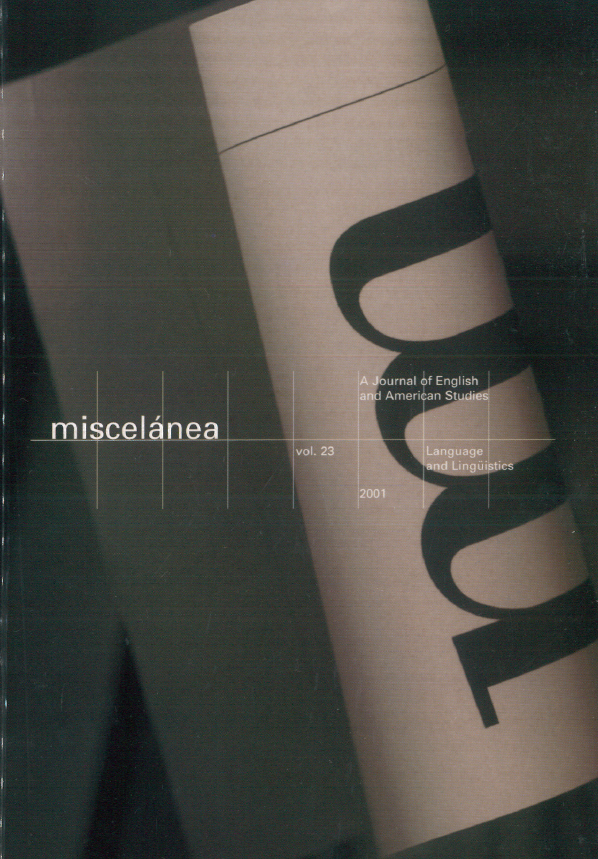Eficacia del Word Association Test y del Pathfinder para medir el aprendizaje léxico del inglés como lengua extranjera
DOI:
https://doi.org/10.26754/ojs_misc/mj.200110537Palabras clave:
test de asociación de palabras (Word Association Test), Pathfinder, inglés, idioma extranjero, aprendizajeResumen
En el presente artículo se pretende descubrir mediante la utilización del diseño Preprueba-Postprueba si los métodos Word Association Test (WAT) y Pathfinder (Schvaneveldt et al. 1985; Schvaneveldt 1990) tienen capacidad para medir el conocimiento léxico del inglés como idioma extranjero. Se propusieron dos tipos diferentes de tareas. En una de ellas los sujetos tuvieron que escribir términos relacionados semánticamente. En la otra los sujetos tenían que emitir un juicio sobre la relación entre pares de palabras. La primera prueba se evaluó con un sistema de puntuación; la segunda con el algoritmo Pathfinder. Los resultados obtenidos confirman que ambos métodos pueden utilizarse en la evaluación del conocimiento léxico.
Descargas
Referencias
AKMAN, Varol. 1997. “Context as a Social Construct”. En Buvac, Sasa y Lucja Iwanska. (eds.). AAAI-97 Fall Symposium on Context in Knowledge Representation and Natural Language. Cambridge, Massachusetts: The AAAI Press: 1-6.
BONEAU, C. Allan. 1990. “Psychological Literacy: A First Approximation”. American Psychologist 45: 891-900.
CAPLAN, David y Gloria WATERS. 1998 (en prensa). "Verbal Working Memory and Sentence Comprehension”. Behavioral and Brain Sciences.
COOKE, Nancy J. 1992. “Predicting Judgment Time from Measures of Psychological Proximity”. Journal of Experimental Psychology: Learning, Memory, and Cognition 18 (3): 640-653.
COOKE, Nancy M., Francis T. DURSO y Roger W. SCHVANEVELDT. 1986. “Recall and Measures of Memory Organization”. Journal of Experimental Psychology: Learning, Memory, and Cognition 12 (4): 538-549.
EDELMAN, Shimon y Nathan INTRATOR. 1997 (Preprint). “Learning as a Extraction of Low-Dimensional Representations”. Mechanisms of Perceptual Learning.
GOLDSMITH, Timothy E., Peder J. JOHNSON y William H. ACTON. 1991. “Assessing Structural Knowledge”. Journal of Educational Psychology 83 (1): 88-96.
GONZALVO, P, Juan José CAÑAS y Mª Teresa BAJO. 1994. “Structural Representations in Knowledge Acquisition”. Journal of Educational Psychology 86 (4): 601-616.
JOHNSON, Peder J., Timothy E. GOLDSMITH y Kathleen W. TEAGUE. 1995. “Similarity, Structure,and Knowledge: A Representional Approach to Assessment”. En Nichols, Paul D. Susan F. Chipman y Robert L. Brennan. (eds.). Cognitively Diagnostic Assessment. Hillsdale, New Jersey: Lawrence Erlbaum: 221-249.
KIRSCH, Irvin y Guy SAPIRSTEIN. "Listening to Prozac but Hearing Placebo: A Meta-Analysis of Antidepressant Medication”. Prevention & Treatment (1), Article 0002a. 1998. .
MAZUR, Allan y Joel MICHALEK. 1998 (en prensa). “Marriage, Divorce and Male Testosterone”. Social Forces.
MILLER, George A. 1956. “The Magical Number Seven Plus or Minus Two: Some Limits on Our Capacity for Processing Information”. The Psychological Review 63: 81-97.
PITARQUE, Alfonso y Juan Carlos RUIZ. 1997. “Representación del conocimiento estructural tras el entrenamiento en esquemas procedimentales”. Psicológica 18: 11-21.
SÁNCHEZ, Mª Jesús. 1999. “El conocimiento léxico y su aprendizaje en el inglés como lengua extranjera: aplicación del Pathfinder como método de análisis”. Universidad de Salamanca, Tesis doctoral sin publicar.
SCHVANEVELDT, Roger W. (ed.). 1990. Pathfinder Associative Networks: Studies in Knowledge Organization. Norwood, New Jersey: Ablex Publishing Corporation.
SCHVANEVELDT, Roger, W., Francis T. DURSO, Timothy E. GOLDSMITH, Timothy J. BREEN, Nancy M. COOKE, Richard G. TUCKER y Joseph C. DE MAIO. 1985. “Measuring the Structure of Expertise”. International Journal of Man-Machine Studies 23: 699-728.
VERPLANCK, Werplanck S. 1992. “A Brief Introduction to the Word Associate Test”. The Analysis of Verbal Behavior 10: 97-123.
Descargas
Publicado
Número
Sección
Licencia
Derechos de autor 2001 María Jesús Sánchez

Esta obra está bajo una licencia internacional Creative Commons Atribución-NoComercial 4.0.


